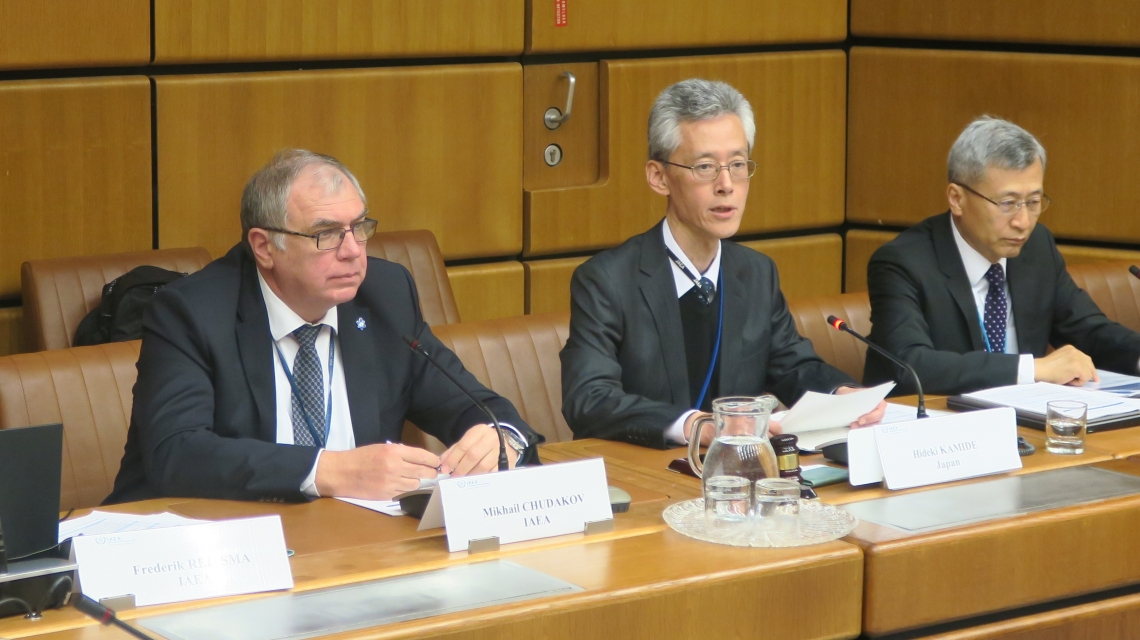Progress, status and future activities related to research, design and development of next generation reactor systems and several cross-cutting topics, such as the future energy markets, were addressed at two consecutive meetings between the IAEA and the Generation IV International Forum (GIF), held in Vienna last week.
“The longstanding dialogue between the GIF and the IAEA creates an important link between the IAEA’s diverse efforts to support its Member States and an important international R&D collaboration among several leading nuclear technology nations,” said Mikhail Chudakov, IAEA Deputy Director General and Head of the Department of Nuclear Energy.
The 13th GIF–IAEA Interface meeting, held on 18 and 19 March 2019, addressed areas of collaboration including nuclear safety, technology development, proliferation resistance and economics of next generation nuclear systems. In particular, meeting participants discussed the harmonization of safety approaches, Safety Design Criteria (SDC) and Safety Design Guidelines (SDG) for innovative reactors that are under development worldwide. This general discussion on safety was continued at the 8th Joint IAEA–GIF workshop on the safety of liquid metal cooled fast reactors (LMFRs).
Hideki Kamide, the newly appointed Chair of the GIF Policy Group, said that GIF and the IAEA have been cooperating on safety design criteria and safety design guidelines for sodium cooled fast reactors (SFRs). “Now we are expanding this collaboration to other reactor systems,” he said. “We want to achieve a common global understanding of these SDC and include in the discussion also regulators of these technologies. Safety and regulation issues are crucial for the commercialization of Generation IV reactor systems.”
The GIF–IAEA Interface meeting, a mechanism to decide on key areas of collaboration between the two organizations, heard the status of Generation IV systems developments and an update of IAEA activities in the technology development of advanced reactors. Participants also discussed opportunities and challenges for these reactor technologies in the future power market and shared respective activities. For example, the IAEA’s International Project on Innovative Nuclear Reactors and Fuel Cycles (INPRO) is providing a new service to Member States on scenario modelling and analysis to support the sustainable development of nuclear energy.
In the area of safety, the IAEA presented its priorities related to advanced nuclear plant design, while GIF representatives discussed activities of their SDC task force and reactor safety and reliability working group.
“Using resources documented in the IAEA’s online catalogue of experimental facilities will help us to accelerate R&D activities on innovative reactors,” Mr Kamide added. The IAEA’s online catalogue of facilities in support of liquid metal-cooled fast neutron systems (LMFNS catalogue) includes an overview and detailed information on more than 150 experimental facilities under design, construction or operation. Nineteen institutions from 14 IAEA Member States participated in the development of the LMFNS catalogue.
“We want to achieve a common global understanding of safety design criteria for next generation nuclear reactors and include in the discussion also regulators of these technologies.





